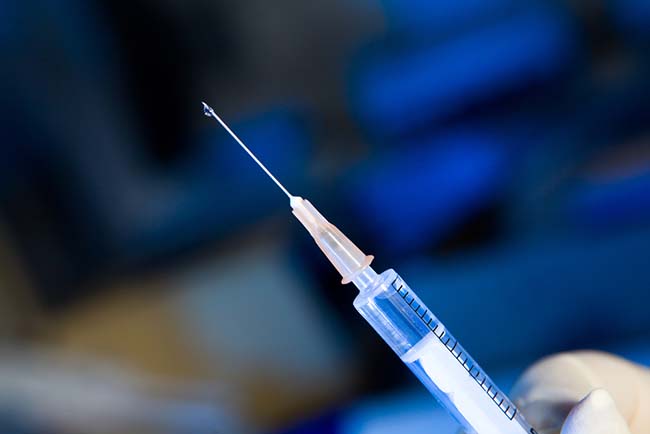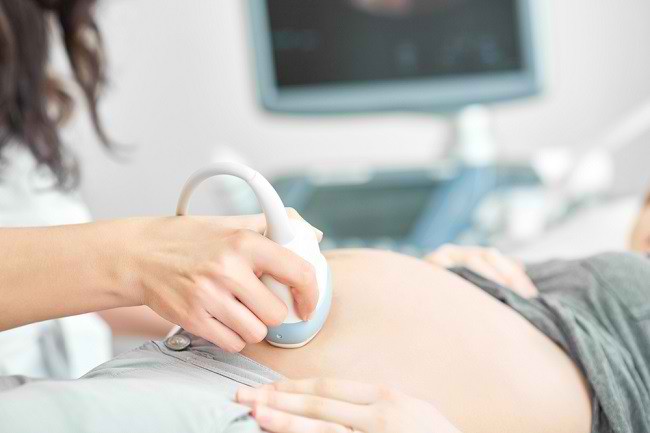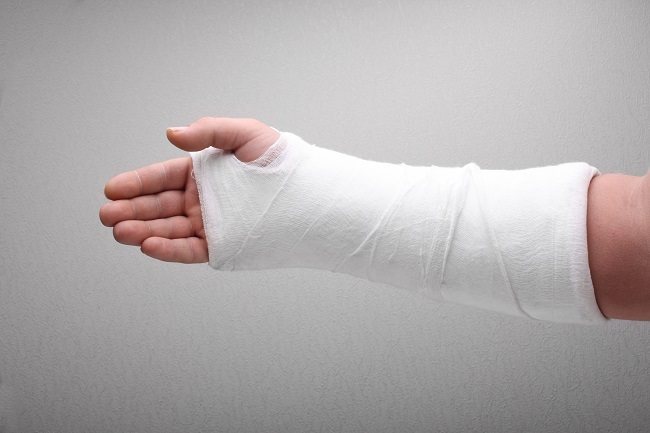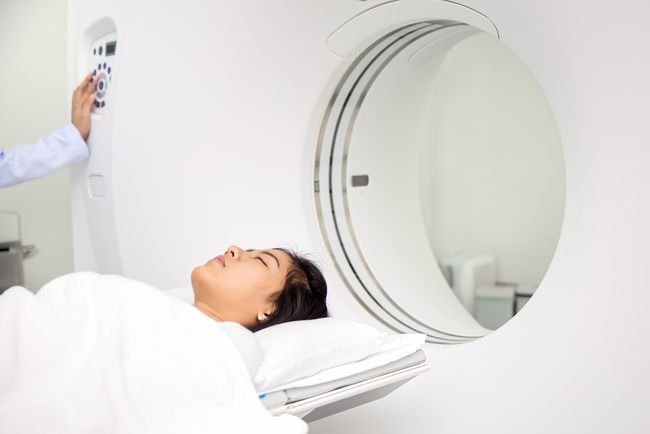Raynaud's syndrome is a condition caused by reduced blood flow to certain parts of the body, especially the fingers or toes, due to narrowing of the arteries. This condition will cause the fingers or toes to be too sensitive to respond to cold temperatures, so that the skin turns pale and turns blue. Sometimes, Raynaud's syndrome also occurs in the ears, nose, lips, and tongue.

There are two types of Raynaud's syndrome, namely:
- Primary Raynaud's syndrome (Raynaud's disease). The most common type of Raynaud's syndrome and without any underlying medical condition. This condition can be mild and does not need to be treated.
- Secondary Raynaud's syndrome (Raynaud's phenomenon). Secondary Raynaud's syndrome is caused by another medical condition, such as an autoimmune disease or an artery disorder. This secondary type is more serious, and requires further treatment and examination in the hospital.
This condition does not cause paralysis, but can affect the sufferer's quality of life. During Raynaud's syndrome, the sufferer will find it difficult to do simple things, such as buttoning a shirt.
Causes of Raynaud's Syndrome
Raynaud's syndrome is caused by narrowing of the arteries, resulting in reduced blood circulation in the fingers or toes. This condition is triggered by several risk factors that are distinguished by the type of syndrome, namely:
- Primary Raynaud's syndrome. The cause of narrowing of the arteries in primary Raynaud's syndrome is not known for certain, because this condition occurs without any underlying disease. However, there are several risk factors that are thought to trigger the occurrence of primary Raynaud's syndrome. Among others are:
- Age. Primary Raynaud's syndrome is most common in people aged 15-30 years.
- Gender. Primary Raynaud's syndrome is more common in women than men.
- heredity factor. If a person has a family member with primary Raynaud's syndrome, the chances of that person getting primary Raynaud's syndrome are higher.
- Climate.Raynaud's syndrome is more common in people who live in cold climates.
- Stress. Mental stress triggers several conditions that result in constriction of blood vessels.
- Secondary Raynaud's syndrome (Raynaud's phenomenon). Secondary Raynaud's syndrome is caused by the following factors:
- autoimmune disease, like lupus, rheumatoid arthritis, and Sjogren's syndrome.
- arterial disorders, include atherosclerosis, Buerger's disease, and pulmonary hypertension.
- CTS (carpal tunnel syndrome). This condition occurs due to pressure on the nerves in the hand.
- Smoke.Smoking causes constriction of blood vessels.
- certain activities, ie doing the same movement for a long period of time, such as typing or playing a musical instrument, as well as operating machinery with fairly loud vibrations.
- certain drugs, include beta blockers, migraine medications containing ergotamine or sumatriptan, cancer medications (cisplatin and vinblastine), birth control pills, and pseudoephedrine.
- hand or foot injury, for example a broken wrist, after surgery on the hand or foot, and frostbite.
- Exposure to certain chemicals such as nicotine and vinyl chloride.
Raynaud's Syndrome Symptoms
Symptoms of Raynaud's syndrome initially occur on one finger or toe, then spread to the other fingers. Sometimes, only one or two fingers have Raynaud's syndrome. Symptoms of Raynaud's syndrome occur in three stages, namely:
- Stage 1: Fingers or toes exposed to cold temperatures turn pale due to reduced blood flow.
- Stage 2: Fingers or toes turn blue due to lack of oxygen supply. At this stage, the fingers will feel cold and numb.
- Stage 3: Fingers or toes turn red again because the blood flow is flowing faster than normal. During this stage, the finger or toe will tingle, throb, and may experience swelling.
Sometimes, Raynaud's syndrome is accompanied by other symptoms, such as pain and burning when blood flow returns quickly. These symptoms will go away slowly when blood flow returns to normal.
Call your doctor immediately if:
- The symptoms are getting worse.
- Symptoms have affected or interfered with daily activities.
- One side of the body experiences numbness.
- Symptoms are accompanied by joint pain, skin rash, and muscle weakness.
- Are over 30 years old and have symptoms of Raynaud's syndrome for the first time.
- Symptoms of Raynaud's syndrome are felt by children under 12 years of age.
Raynaud's Syndrome Diagnosis
The diagnosis process begins with a medical history examination to see the symptoms and risk factors the patient has. Next, the doctor will perform a physical examination by examining the fingers or toes for the condition of the skin, nails, and blood flow, as well as signs of secondary Raynaud's syndrome. In addition, the doctor will also perform several diagnostic tests, including:
- cold stimulation test, which is a diagnostic test performed to trigger symptoms of Raynaud's syndrome. In this test, a temperature gauge is placed on the finger, then the hand is submerged in ice water for several minutes. Once the hand is removed, the device will measure how quickly the finger returns to its normal temperature. People with Raynaud's syndrome usually take more than 20 minutes for the finger to return to normal temperature.
- Naifold capillaroscopy. This test is done by inserting a drop of liquid or oil under the nail to see the condition of the arteries under the nail through a microscope.
- Blood test. Blood tests are done to detect disorders or medical conditions associated with secondary Raynaud's syndrome. Types of blood tests performed include:
- complete blood count test, to detect signs of infection or the presence of cancer cells in the blood.
- Antinuclear antibody test (ANA), to check for the presence of antibodies that cause the autoimmune condition in secondary Raynaud's syndrome.
- erythrocyte sedimentation rate test, to determine the speed at which red blood cells fall or settle to the bottom of a glass test tube. This test is done to detect inflammation or infection.
Raynaud's Syndrome Treatment
There is no cure for primary and secondary Raynaud's syndrome. However, handling is still carried out with the aim of:
- Relieves symptoms and reduces the severity of Raynaud's.
- Prevent network damage.
- Treat the underlying cause of Raynaud's syndrome.
Primary Raynaud's syndrome does not require any specific medical treatment. There are several steps that can be taken when an attack of primary Raynaud's syndrome occurs, namely:
- Enter immediately or move to a warmer room.
- Immediately warm your hands or feet by placing your hands under your armpits or soaking your feet in warm water.
- Perform massaging movements on the fingers or toes.
- Practice some relaxation techniques if primary Raynaud's syndrome is caused by stress.
Secondary Raynaud's syndrome is more serious and requires medical attention by a doctor. There are several treatment steps for secondary Raynaud's syndrome. Among others are:
- Drug therapy. The administration of drugs is adjusted to the patient's condition and the cause of the symptoms. The types of drugs given are:
- calcium antagonist, to improve blood flow in the small blood vessels of the hands and feet, thereby reducing the frequency and severity of symptoms experienced. Examples of calcium antagonist drugs are: nifedipine and amlodipine.
- Vasodilators, to dilate blood vessels. Examples of vasodilator drugs given are nitroglycerin, antidepressant drugs, antihypertensive drugs, and erectile dysfunction drugs (sildenafil).
- Inject botulinum toxin. Botulinum toxin or botox useful for paralyzing nerves so they do not respond excessively to cold temperatures. Injections will be repeated.
- Neurosurgery. Doctors will recommend surgery if the symptoms of Raynaud's syndrome are getting worse and drug therapy is no longer effective. The doctor will make small incisions and cut nerves to reduce sensitivity, so that the frequency and duration of symptom attacks decreases.
Raynaud's Syndrome Complications
There are several complications caused by Raynaud's Syndrome, including:
- gangrene. This condition occurs when an artery becomes completely blocked and causes an infection. In rare cases, gangrene can lead to amputation of the affected body part.
- scleroderma, an autoimmune disorder that causes thickening or hardening of the skin and connective tissue. This condition occurs when the body produces too much collagen.
Raynaud's Syndrome Prevention
Several steps can be taken to prevent Raynaud's syndrome, namely:
- Use gloves, a hat, a jacket or thick clothing, and boots when going out in cold temperatures.
- Use earplugs and a face mask, if the tip of the nose and ears are sensitive to cold.
- Wear socks even indoors or while sleeping, especially if you live in an area that has winter.
- Avoid sudden changes in temperature, for example from warm air to an air-conditioned room.
- Use protection or hand covers when taking something from freezer.
- Avoid severe stress with meditation or yoga.
- Avoid consuming too many caffeinated drinks.
- Avoid smoking or being in an area surrounded by smokers.
- Avoid taking drugs that can cause constriction of blood vessels, such as decongestants.
- Avoid using tools that generate a lot of vibration, such as mixer or other power tools. Vibration can trigger symptoms of Raynaud's syndrome.









